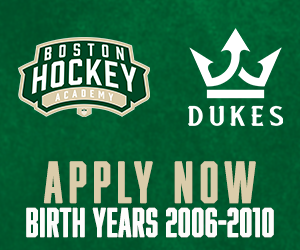When you look at the history of Division II college hockey, there are a lot of familiar names.
The NCAA sponsored a Division II national championship from 1978-84 and then against from 1993-99. However, most of Division II hockey dried up, with the teams either moving down to Division III or up to Division I.
Division II national champions include current D-I programs like Merrimack, Bemidji State, UMass Lowell and Alabama-Huntsville. St. Michael’s a small college in Vermont, won the last national title in 1999.
When Division II hockey broke apart, several schools like the ones mentioned above moved up to Division I — the NCAA allowed them to in just hockey at the time — and other programs dropped to Division III. However, in order to drop to D-III, schools needed to drop their entire athletic department to D-III.
Today, there are rules against “playing up” in one sport (there have been since 2011). Programs were grandfathered in, but it’s not a practice allowed by the NCAA anymore.
While almost all of the Division II programs either moved up to D-I or down to D-III, there were a handful of schools that were stuck in the middle, stuck as forgotten programs in Division II. Their schools didn’t want to drop their entire department to Division III, and they weren’t willing to make the investment to go Division I.
The leaders are these schools allowed their programs to be left behind, and the NCAA watched it happen.
Today, there are seven of those schools left in the Northeast-10 Conference, comprised of schools in the Northeast part of the U.S.
Especially this time of year, players in their last year of junior eligibility will commit to D-III teams in droves. Every once in awhile, you’ll see a player commit to a Division II school (the ones remaining are Southern New Hampshire, St. Michael’s, Stonehill, Franklin Pierce, Saint Anselm and Post).
There are differences between Division II and Division III, and none of the differences provide an advantage for D-II programs.
The biggest misconception about D-II hockey is that the players receive athletic aid. They don’t. While other D-II athletes are eligible for aid, D-II hockey in the NE10 doesn’t give aid. This is because those D-II teams need to schedule non-conference games against D-III teams, and the D-III teams won’t schedule D-II opponents if they are at a disadvantage, playing teams that have recruited scholarship players against a D-III team that doesn’t (no D-III programs are allowed athletic aid).
Who would blame them?
So, D-II and D-III teams are essentially recruiting the same players.
However, D-II programs have stricter guidelines as far as getting players eligible. D-III athletes aren’t subject to the NCAA clearinghouse because there’s no scholarship involved across all sports in the division. But because D-II athletes are technically eligible for athletic aid, D-II hockey players are subject to Division II rules, despite not receiving any aid.
Even though there is no Division II national championship, and most Division II schools play primarily Division III opponents, the Division II programs still need to adhere to Division II guidelines, including the clearinghouse. That means stricter requirements when it comes to players’ academics.
Lastly, it’s becoming harder and harder for some Division II programs to schedule games against Division III opponents. This is because the games D-III teams play against the D-II teams don’t count towards the RPI for the D-III teams. When it comes to the national tournament, teams looking for at-large bids need to worry about their RPI, and sacrificing a chance to improve their RPI isn’t worth the risk to some programs.
So, that brings me to my final point.
Why doesn’t the NCAA make the Division III national championship a Division II/III national championship?
It’s not as if the Division II schools are at an advantage. Just like the D-III programs, they do not offer aid, and they are bound to stricter academic regulations and eligibility under the NCAA. If anything, the Division II schools are at a disadvantage in a 1-on-1 comparison.
On the ice, it’s the same game. Off the ice, it’s totally different.
If the NCAA is truly all about the “student-athlete experience,” a buzzword they often use, then combining to a Division II/III national championship is a no-brainer. The NE10 teams could stick together as a conference, only qualify for an auto bid to the tournament. The additional of the D-II schools could also allow the tournament to expand to 16 teams (it’s currently at 12), which would match the Division I tournament.
Combing the championship means the D-II teams would count in the RPI, taking away a roadblock when it comes to scheduling games. They would still be subject to the Division II clearinghouse and allowing those players the chance to compete for a national championship would certainly “enhance the student-athlete experience,” would it not?
There isn’t a conceivable reason to continue the practice of locking out the Division II programs.





